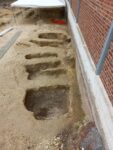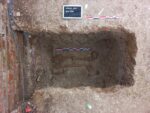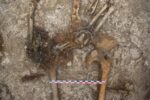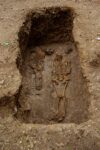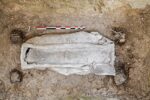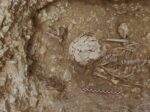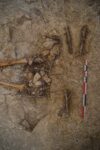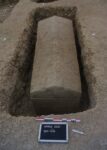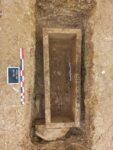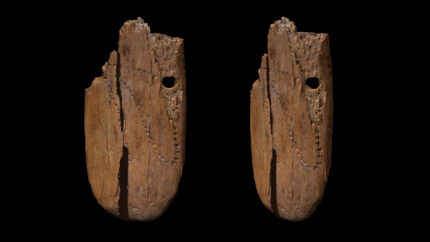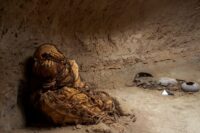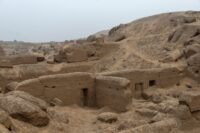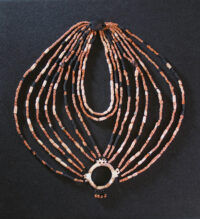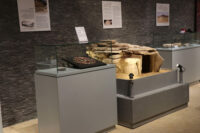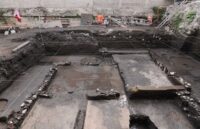 A Mexica altar with offerings left after the fall of Tenochtitlan has been discovered near Plaza Garibaldi in the historic center of Mexico City. The altar was in the interior courtyard of a private dwelling but it was richly appointed with five ceramic bowls, a plate, 13 large polychrome incense burners and a pot containing cremated human remains.
A Mexica altar with offerings left after the fall of Tenochtitlan has been discovered near Plaza Garibaldi in the historic center of Mexico City. The altar was in the interior courtyard of a private dwelling but it was richly appointed with five ceramic bowls, a plate, 13 large polychrome incense burners and a pot containing cremated human remains.
Archaeologists with the National Institute of Anthropology and History (INAH) discovered the altar 13 feet beneath the surface. It was under several layers of adobe construction of a home in what was then the Tezcatzonco neighborhood, one of the four districts of Mexica Tenochtitlán. The patio was on the earliest layer.
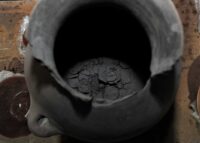 The excavation has revealed one room adjacent to the patio and a corridor connecting to five rooms. The rooms still contain their original stucco floors and walls. One of them was a kitchen, identified as such by the giant tlecuilli (fire pit). The pit as excavated measures 13 x 10 feet, but it was originally even bigger. Its full size can’t be determined because it extends under the surrounding property.
The excavation has revealed one room adjacent to the patio and a corridor connecting to five rooms. The rooms still contain their original stucco floors and walls. One of them was a kitchen, identified as such by the giant tlecuilli (fire pit). The pit as excavated measures 13 x 10 feet, but it was originally even bigger. Its full size can’t be determined because it extends under the surrounding property.
The architectural layers point to at least two stages of occupation, in the Late Postclassic and in the first century of the Spanish occupation between 1521 and 1610. INAH archaeologists believe the residents of the home performed religious rites out of view of the prying eyes of the Spanish authorities.
“On the other hand, the set of 13 incense burners expresses a particular symbolism, since they were arranged on two levels and in two different orientations: some in an east-west direction, and others in a north-south direction, as an evocation of the 20 thirteen that made up the tonalpohualli , the 260-day Mexican ritual calendar; Likewise, it is worth mentioning that the number 13 alluded to the levels of the sky.
“The characteristics of the incense burners also reinforce the Nahua conception of the universe, for example, the openwork cross of the incense cups represents the quincunx, symbol of the axis mundi ; while the hollow handles in red, black and blue colors —which served as a wind instrument—, and its finish with the representation of the head of a water snake, refer to the forces of the underworld “, explains the [archaeologist Mara Becerra].
All the above, coupled with the fact that the ceramic types found (Azteca Bruñida and Roja Bruñida tiles) are associated with the periods of Spanish and early viceregal contact, “allows us to interpret this archaeological context as evidence of an offering that was arranged in the first decades after the invasion of Tenochtitlan, as part of a closing ritual of the same space, an essential act for the Tenochca worldview “, concludes the archaeologist Mara Becerra Amezcua.
